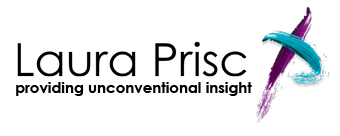I’m working my way through a process called The Deeper Path, led by Kary Oberbrunner, a fellow John Maxwell Team member can coach who is guiding me through this amazing process he developed with his Builder, Chet Scott. Traveling The Deeper Path is all about gaining clarity and focus.
While I have what I believe to be a lot more clarity about where I’m headed and what I’m building in my life than many others, I know I don’t have it to the degree I need it to be truly fulfilled, successful, and reach my potential. The truth is, there is so much stuff going on around all of us all day long, so much noise, so many messages to sift through, so many people clamoring for our time and attention, it’s easy to get lost in the shuffle. It’s easy to get lost in all the stuff. It’s easy to be busy, and yet not feel productive.
I know I’ve been there, on more days than I like to admit to. Yet, I’m aware of this, and awareness is the key. Once you have come to this realization, you have the opportunity — and the choice — to do something about it, to do something differently.
You see, busy doesn’t necessarily equate to productive. To be productive, I need to spend my time on the “right” activities. To know what the “right” activities are, I need clarity and focus!
How do we get there? Begin with the end in mind: What objective are we trying to achieve? When you can write an objective statement simply and clearly, you understand what you need to do to achieve it, when you need to do it, how you will do it, what resources (people and other) you need, and what the result will be when you are done.
Let’s put it into practice. We will create a task list that will allow you to stay focused on your project, effectively thinking through from the big picture to the details.
Across the top of a piece of paper, write your task or goal statement. Then, below it write this — and do the ranking:
Priority (1 = Low and 5= High) 1 2 3 4 5
Impact (1 = Low and 5= High) 1 2 3 4 5
Define the following:
What tools will you use to accomplish this task? List all resources — tangible or intangible, including specific people (time, money, supplies, staff, other materials, etc…)
Who will benefit or otherwise be affected by the completion of this task?
What will be the result?
When you’ve completed this exercise, use the information to draft your objective statement. Here’s an example: “By the end of this week, I will have created a comprehensive client contact file, including communication preferences, connection time-lines, product and services preferences, and known networks/affiliations, which I will use to track my business and networking activities.”
Now, take a clean sheet of paper, write your new objective statement at the top, then create your thorough task list which will allow you to meet your goal. Make notes as you work through it this week on what worked, what didn’t what you added that you didn’t need, what you needed but didn’t think to list…We’ll do some reflection on this later.
Get to work!
